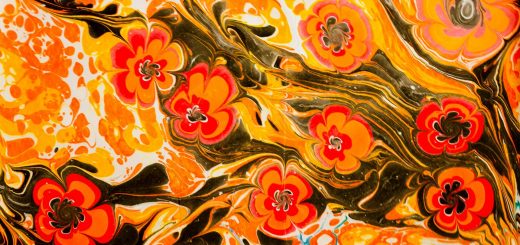The Quillwork Tradition: Artistic Craft in Native Cultures

TRANSLATE BUTTON AT THE END OF THE ARTICLE
Introduction: A Timeless Art Form
Quillwork is a traditional craft that has been practiced by Native American tribes for centuries.
This intricate art form involves the use of porcupine quills to create beautiful designs and patterns on various objects.
It is a labor-intensive process that requires skill, patience, and a deep understanding of the cultural significance behind each design.
The art of quillwork holds a special place in Native American cultures, serving as a form of storytelling, cultural expression, and identity.
In this article, we will explore the origins, techniques, symbolism, and impact of quillwork in different Native American tribes, as well as its contemporary adaptations and the efforts made to preserve this rich tradition in the modern world.
Origins and Historical Significance
The origins of quillwork can be traced back to pre-contact times when Native American tribes across North America used various natural materials for decorative purposes.
However, it was the introduction of European trade goods, particularly glass beads and metal needles, that revolutionized quillwork and allowed for more intricate designs.
Quillwork became highly sought after by European settlers for its unique beauty, durability, and cultural significance.
It played a crucial role in intertribal trade, diplomacy, and cultural exchange, often adorning items such as clothing, moccasins, bags, and ceremonial regalia.
Materials Used in Quillwork
Porcupine quills are the primary material used in quillwork.
These quills, usually harvested from porcupines during the late summer or early fall, are cleaned, sorted, and dyed using natural dyes made from plants and minerals.
Traditional quillworkers would flatten the quills using their teeth or by rolling them between their fingers.
Today, metal tools are often used to soften the quills, making them more pliable for weaving.
Other materials such as hide, birch bark, or wood are used as a base to attach the quills to, creating a sturdy and functional piece of artwork.
Techniques and Skills Passed Down Through Generations
Quillwork requires a high level of skill and precision.
The process involves threading the quills through the base material, often in a technique called wrapping or sewing.
The quills are secured using a variety of stitches, which may differ among tribes and regions.
Some common stitches include the zigzag, diamond, and herringbone.
These techniques are passed down through generations, with experienced quillworkers teaching younger members of the community the intricate art form.
It is a time-honored tradition that not only preserves the cultural heritage but also fosters a sense of pride and belonging within Native American communities.
Symbolism and Meaning in Quillwork Designs
Quillwork designs are not merely decorative; they often hold deep cultural and spiritual meaning.
Different tribes have their own unique symbols and motifs that reflect their history, beliefs, and connection to the natural world.
For example, the Ojibwe tribe often incorporates the turtle symbol, which represents the earth and the importance of harmony.
The Lakota people use the thunderbird symbol to represent power, strength, and protection.
Each design carries a story, passed down through generations, and acts as a visual language that communicates important cultural values and teachings.
Quillwork in Different Native American Tribes
Quillwork is practiced by various Native American tribes, each with its distinct style and technique.
The Plains tribes, such as the Sioux, Cheyenne, and Blackfoot, are known for their bold and geometric patterns.
In contrast, the Woodland tribes, including the Ojibwe, Ho-Chunk, and Menominee, often create more intricate and floral designs.
The tribes of the Great Lakes region, such as the Iroquois and Huron, are renowned for their beautiful quillwork birch bark boxes.
Each tribe’s quillwork is a reflection of their unique cultural heritage, environment, and artistic traditions.
Quillwork as a Form of Storytelling and Cultural Expression
Quillwork serves as a form of storytelling and cultural expression within Native American communities.
Each design tells a story, capturing important events, legends, or spiritual beliefs.
For example, a quilled belt might depict a battle scene, while a quilled bag could symbolize the journey of a warrior.
Quillwork also allows for the preservation of oral traditions and cultural knowledge.
Elders or skilled quillworkers often incorporate traditional stories and teachings into their designs, ensuring that important cultural narratives are carried forward and shared with younger generations.
Contemporary Adaptations: Blending Tradition and Innovation
In the modern world, quillwork has evolved, with artists blending traditional techniques and materials with contemporary styles and innovation.
While porcupine quills remain the foundation of this art form, artists now incorporate other materials such as beads, cloth, or metal into their designs.
The introduction of new tools and technologies, such as metal needles and commercial dyes, has expanded the possibilities for quillwork.
This blending of tradition and innovation allows quillwork to remain a dynamic and evolving art form while preserving its cultural and historical roots.
Preserving the Quillwork Tradition in the Modern World
Efforts are being made to ensure the preservation of the quillwork tradition in the face of modern challenges.
Native American organizations, museums, and cultural centers are working to educate the public about the importance and significance of quillwork.
They provide platforms for quillwork artists to showcase their work and pass down their knowledge to future generations through workshops and apprenticeships.
Additionally, initiatives focused on the conservation of porcupine populations and sustainable harvesting practices are crucial to the continued availability of materials for quillwork.
Quillwork’s Impact on Native Art and Identity
Quillwork has had a profound impact on Native American art and identity.
It serves as a visual representation of cultural pride, resilience, and creativity.
Quillwork artists often find inspiration in their cultural heritage, using their craft as a means of reclaiming and celebrating their Native identity.
Through quillwork, Native artists are able to challenge stereotypes and misconceptions, showcasing the sophistication and artistic excellence of their cultures.
The recognition and appreciation of quillwork by the wider public also contribute to the acknowledgment and respect for Native American art forms, fostering cultural understanding and appreciation.
Appreciating the Beauty and Complexity of Quillwork
In conclusion, quillwork is a time-honored artistic tradition that holds deep cultural and historical significance within Native American cultures.
From its origins to its contemporary adaptations, quillwork serves as a form of storytelling, cultural expression, and identity.
The intricate designs, symbolism, and techniques passed down through generations reflect the rich diversity and creativity of Native American tribes.
Efforts to preserve and promote quillwork ensure that this beautiful and complex art form continues to thrive and contribute to the cultural heritage of Native communities.
By appreciating the beauty and complexity of quillwork, we gain a deeper understanding and respect for the artistic traditions and cultural legacy of Native American tribes.

The Enlightenment Journey is a remarkable collection of writings authored by a distinguished group of experts in the fields of spirituality, new age, and esoteric knowledge.
This anthology features a diverse assembly of well-experienced authors who bring their profound insights and credible perspectives to the forefront.
Each contributor possesses a wealth of knowledge and wisdom, making them authorities in their respective domains.
Together, they offer readers a transformative journey into the realms of spiritual growth, self-discovery, and esoteric enlightenment.
The Enlightenment Journey is a testament to the collective expertise of these luminaries, providing readers with a rich tapestry of ideas and information to illuminate their spiritual path.
Our Diverse Expertise 🌟
While our primary focus is on spirituality and esotericism, we are equally passionate about exploring a wide range of other topics and niches 🌍📚. Our experienced team is dedicated to delivering high-quality, informative content across various subjects ✨.
To ensure we provide the most accurate and valuable insights, we collaborate with trusted experts in their respective domains 🧑🏫👩🏫. This allows us to offer well-rounded perspectives and knowledge to our readers.
Our blog originally focused on spirituality and metaphysics, but we’ve since expanded to cover a wide range of niches. Don’t worry—we continue to publish a lot of articles on spirituality! Frequently visit our blog to explore our diverse content and stay tuned for more insightful reads.





















